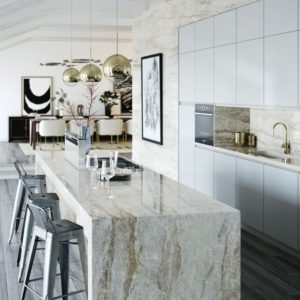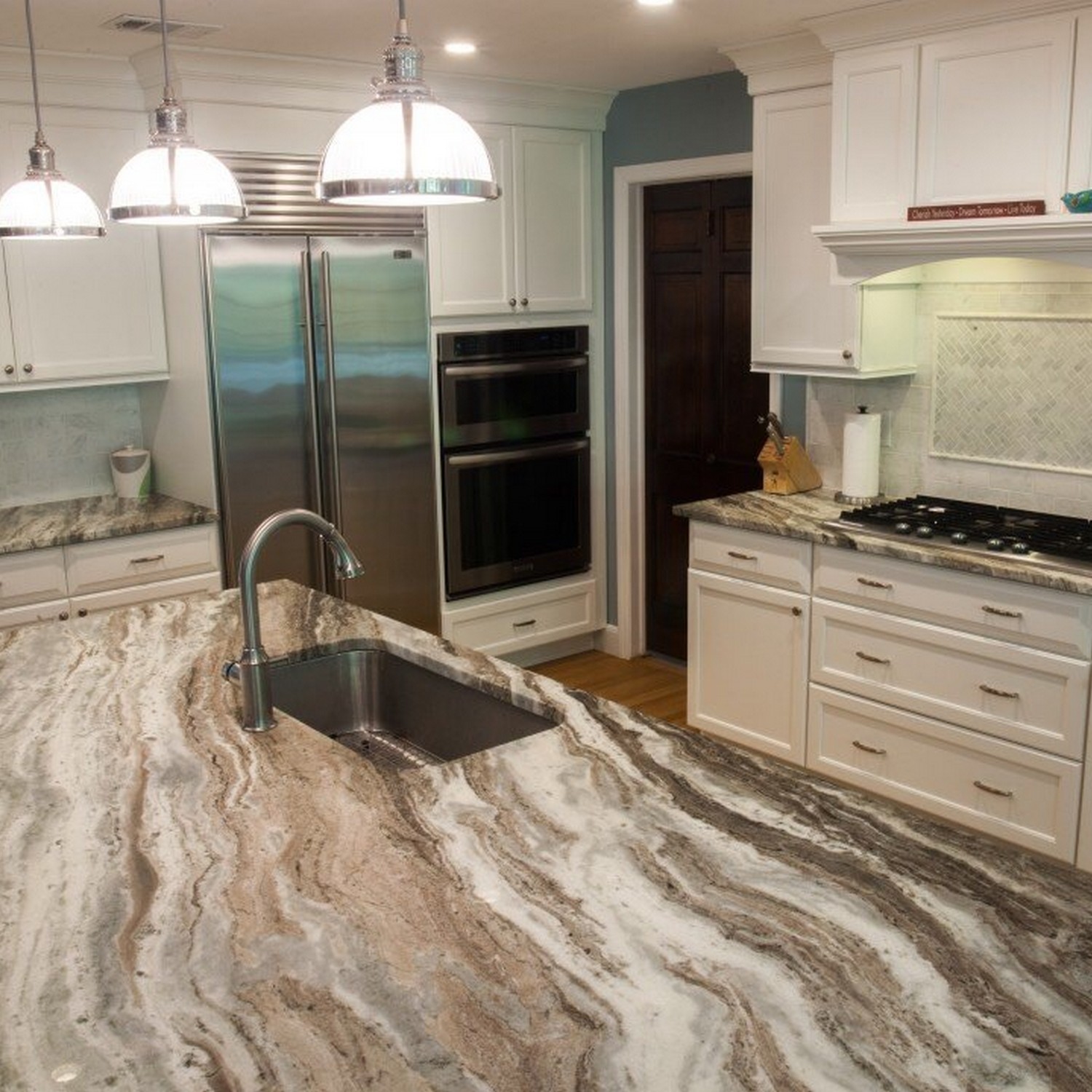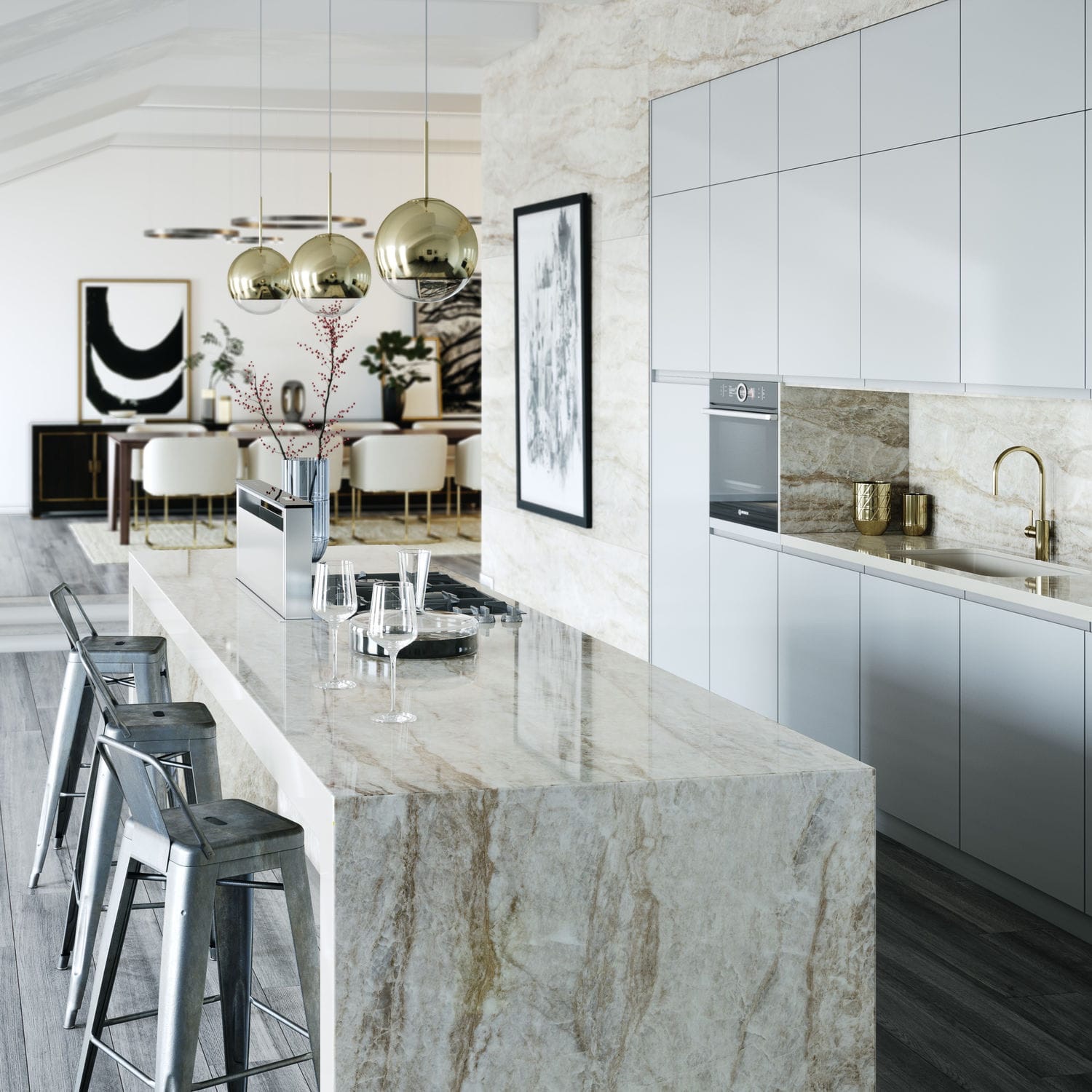QUARTZITE SLABS & COUNTERTOPS IN FORT LAUDERDALE AND OAKLAND PARK
 Quartzite is a very hard metamorphic rock that originated as sandstone. Through a process of high heating and pressurization, sandstone is transformed into Quartzite, an extremely strong and durable natural stone. When heated, individual quartz pieces recrystallize giving it a beautiful and decorative sparkling pattern. Quartzite is ideal for any countertop surface due to its strength and long-lasting composition. Consider quartzite countertops for its strength, beauty, and overall durability.
Quartzite is a very hard metamorphic rock that originated as sandstone. Through a process of high heating and pressurization, sandstone is transformed into Quartzite, an extremely strong and durable natural stone. When heated, individual quartz pieces recrystallize giving it a beautiful and decorative sparkling pattern. Quartzite is ideal for any countertop surface due to its strength and long-lasting composition. Consider quartzite countertops for its strength, beauty, and overall durability.
Quartz vs. Quartzite: The Rundown
Let’s take a closer look at what these two similarly-named materials are really made of. Discovering their origins can assist you in determining where they would best fit in your home. Keep in mind that certain materials are often chosen for certain qualities. And there are more distinctions between these two materials than you might have known.
Quartz
Quartz is a word that pops up often when talking about countertops, stone tiles, and other natural-looking investments. But, it’s just that: natural-looking. Quartz is actually a synthetic type of material made from an amalgamation of stone chips. It’s mixed with resins and a variety of pigments to make beautiful slabs to be turned into flooring or countertops. Since it is handmade, it is often produced in much larger quantities.
Quartzite
Quartzite, on the other hand, is a completely natural type of rock. It was once sandstone and metamorphosed into the quartzite form. It is usually mined in large quarries in its raw form, and then it is then taken to a processing plant where it is turned into thin slabs of stone. This quartzite stone can be turned into flooring tiles, wall tiles, backsplashes, or kitchen countertops. Quartzite is often as highly prized as marble or limestone due to the way it is naturally mined from quarries. The natural veining patterns and blotches of gray or white are what make quartzite such a heavily sought-after material for many different renovation projects.
They can sometimes share a similar appearance – in fact, some homeowners are unsure whether they have quartz or quartzite in their kitchens. Quartzite comes naturally in gray and white swirls, a pattern that quartz often imitates. However, in terms of make, texture, and sturdiness, quartzite is actually more similar to granite.
- Quartzite is much more varied in veining, coloring, and patterns, as mother nature never makes the same thing twice.
- Definitely a plus — Quartzite is more resistant to scratching than quartz, as the natural veining and dark gray patterns can easily cover those scratches right up.
- Quartzite is better at heat resistance than quartz, making it better in the kitchen during those moments where you need to set a hot pot down directly on the counter.
Quartzite: Known for its overall durability and strength as well as beauty, quartzite tends to be more resistant to high temperatures and scratches than other types of material. If attention to detail is important to the look of your kitchen, Counter Kings recommends quartzite since it has much to offer your countertops.
 Fantasy Brown
Fantasy Brown Mont Blanc
Mont Blanc Taj Mahal
Taj Mahal